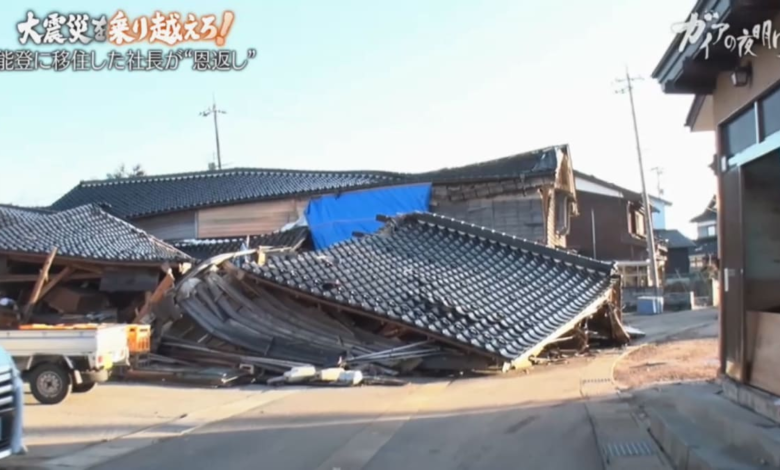Gaia Series 42 : Overcome the Great Earthquake

In Suzu City, amidst the backdrop of earthquake recovery, the resilience of local businesses and community spirit form a narrative of hope and renewal.
In the heart of Ishikawa Prefecture, Suzu City stands at the tip of the Noto Peninsula. Its community is now defined by an unyielding resilience and deep solidarity in the aftermath of a devastating earthquake.
Its recovery story is not just about rebuilding structures but also about the emotional and communal rebirth witnessed within the walls of local establishments such as Robatayaki Asai. This week’s episode spotlights the izakaya, which has been operating for over fifty years. The diner encapsulates the enduring spirit of Suzu, serving as a gathering spot where the simple joy of dining reconnects the community and stitches the social fabric torn by natural disaster.
The February chill does little to dampen the warm atmosphere inside Robatayaki Asai, where the owner, Makoto Asai, keeps the tradition alive by serving up plates of fresh sashimi from Kanazawa and succulent oysters from Nanao. The food, rich in local flavour, carries stories of perseverance and heritage, each dish a testament to the region’s commitment to preserve its culinary identity despite recent trials.
Patrons, many returning for the first time since the quake, share heartfelt stories over their meals. One diner tearfully remarks, “I’m so glad to eat sashimi,” her relief palpable, highlighting the contrast between the current cosy comfort of the restaurant and the stark conditions of evacuation shelters.
Further weaving into Suzu’s tapestry of recovery is Keitaro Iwaki, CEO of a pharmaceutical company, who, inspired by the resilience he witnessed, relocated his operations from Tokyo to Suzu.
Iwaki’s decision is both a personal commitment and a strategic move to inject economic vitality into the quake-stricken area. He’s been pivotal in coordinating recovery efforts, ensuring that essentials like water, food, and medical supplies reach those in need. Iwaki’s leadership extends beyond logistics; he’s deeply involved in planning for the town’s future economic stability and cultural preservation.
Amid these narratives of business endurance and leadership, the tale of the Sakurada Sake Brewery stands out. Hiroyoshi Sakurada, the fourth-generation owner, is battling to revive his family’s 100-year-old legacy. The brewery was severely damaged, yet amidst the ruins, Sakurada found hope—over 800 bottles of sake survived, a symbol of resilience that has inspired him to plan a comeback.
With the support of fellow distillers across Ishikawa, he aims to restart production by spring, rekindling a craft that is a cornerstone of local heritage and an attraction for tourism, which remains vital for Suzu’s recovery.
The spirit of Suzu is mirrored in the broader community initiatives that focus on sustainable rebuilding and preparedness for future calamities. This includes strengthening architectural standards and enhancing emergency response systems, ensuring that the physical and communal resilience of Suzu is fortified against future challenges.
This community-centric approach to recovery is also seen in the efforts of local and relocated individuals who volunteer for rebuilding projects, from clearing debris to organising community support groups. These efforts are crucial in maintaining a sense of normalcy and continuity, helping the town heal not just physically but also emotionally.
Suzu City’s story is not just about the adversity faced but about the collective spirit that surmounts it. It’s a narrative enriched by each meal shared at Robatayaki Asai, each bottle of sake preserved at Sakurada Brewery, and every strategy implemented by leaders like Iwaki.
As the town rebuilds, these stories weave a tapestry of resilience, hope, and a communal vow to rise above the disaster, ensuring Suzu City remains a beacon of endurance and revival on the Noto Peninsula.


 Casino Welcome Bonus
Casino Welcome Bonus